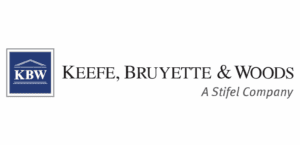Do Managed Repair Programs Violate The Unfair Claims Practice Act?

Public adjuster Corey Locke followed up on yesterday’s post, All Insurance Companies Have Written Claims Processes, with the following question:
If a TPA program demand the vendor(s) cut their reasonable and necessary estimated costs, in order to participate in insurance carrier referral programs, then how is the insured fully compensated for their loss under California Code 2051.5?
Insurance companies have been tripping over themselves to get the best deals they can from managed repair programs in various forms. Rather than allow contractors to determine the proper methodology of repair, they dictate how the repairs are to be accomplished and what will be paid through various managed repair methods. So, the title of this post and Corey’s question seem fair for analysis.
Departments of insurance and those involved with market conduct studies should also be studying this. Many insurers are now doing in the property insurance claims business similar to what they have been doing in the automobile body shop business for decades.
Corey Locke followed up his question with the following analysis:
(b) Under an open policy that requires payment of actual cash value, the measure of the actual cash value recovery, in whole or partial settlement of the claim, for either a total or partial loss to the structure or its contents, shall be the amount it would cost the insured to repair, rebuild, or replace the thing lost or injured less a fair and reasonable deduction for physical depreciation based upon its condition at the time of the injury or the policy limit, whichever is less.
The language states that the cost is determined based on an insured going to the open market of vendors and selecting anyone – not a preferred vendor with a reduced pricing matrix.
A preferred vendor program is immediately non-compliant with code section 2051 and also with 2695.7(g)(5)
(g) No insurer shall attempt to settle a claim by making a settlement offer that is unreasonably low. The Commissioner shall consider any admissible evidence offered regarding the following factors in determining whether or not a settlement offer is unreasonably low:
….
(5) the procedures used by the insurer in determining the dollar amount of property damage;
And finally, preferred vendor program do not comply with the Additional Standards Applicable to First Party Residential and Commercial Insurance Policies under 2695.9:
(b) No insurer shall require that the insured have the property repaired by a specific individual or entity.
(c) No insurer shall suggest or recommend that the insured have the property repaired by a specific individual or entity unless:
(1) the referral is expressly requested by the claimant; or
(2) the claimant has been informed in writing of the right to select a repair individual or entity and, if the claimant accepts the suggestion or recommendation, the insurer shall cause the damaged property to be restored to no less than its condition prior to the loss and repaired in a manner which meets accepted trade standards for good and workmanlike construction at no additional cost to the claimant other than as stated in the policy or as otherwise allowed by these regulations.
(d) If losses are settled on the basis of a written scope and/or estimate prepared by or for the insurer, the insurer shall supply the claimant with a copy of each document upon which the settlement is based. The estimate prepared by or for the insurer shall be in accordance with applicable policy provisions, of an amount which will restore the damaged property to no less than its condition prior to the loss and which will allow for repairs to be made in a manner which meets accepted trade standards for good and workmanlike construction. The insurer shall take reasonable steps to verify that the repair or rebuilding costs utilized by the insurer or its claims agents are accurate and representative of costs in the local market area.
The insurer warranties under a direct vendor program that the repairs are done in a manner that meets accepted standards for good and workmanlike construction.
The estimate has to stand up to scrutiny and meet accepted trade standards in the local area market.
But since the depressed cost under a Preferred Vendor Program (Contractor Connection, Code Blue, Alacrity) is an artificial market cost, and the discounted costs for estimated repairs are not to accepted trade standards for good and workman like construction, such program are Unfair Claims Practice in California.
Such programs do not restore an insured to pre-loss condition, as the costs are not representative in the local market to repair the risk to meet good and workmanlike construction.
Most of this I agree with until the last sentence. The physical pre-loss condition can be restored whether or not the costs are lower and not representative of the market. Lower payments by insurers which are less than local pricing, begs the question of whether contractors will perform at the standard to meet legal, proper, and workmanlike construction at lower costs rather than try to hide illegal, improper, and unworkmanlike construction – and is certainly the policyholder’s concern.
If you missed yesterday’s post, I would suggest that you read the Contractor Connection Guidelines we attached to that post. This is what lead to Corey Locke’s valid concerns.
In my opinion, these directions should be provided by the insurers to their policyholders, so everybody is transparent about the dictates on how the home or commercial structure is to be rebuilt. Why shouldn’t insurers be honest and show these directives to their customers if they are honest and in good faith?
Thought For The Day
There can be no faith in government if our highest offices are excused from scrutiny – they should be setting the example of transparency.
—Edward Snowden


